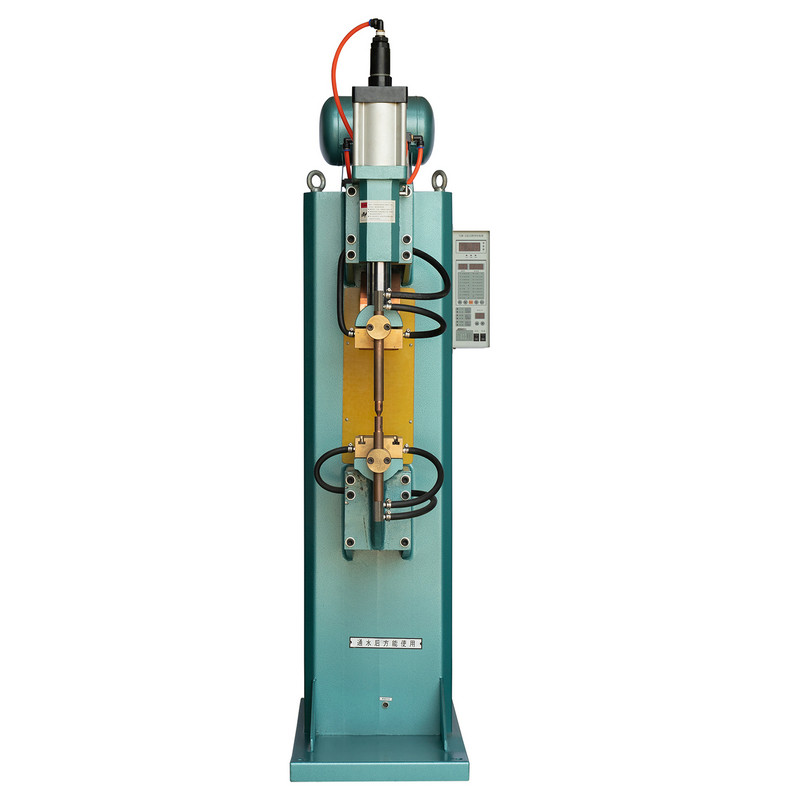1. Precise current regulation: improve welding stability and quality
One of the most critical factors in the welding process is the regulation of current. Traditional welding equipment often cannot quickly and effectively adjust the current and power when facing different materials, resulting in uneven temperature and easily affected welding quality. In contrast, the Medium Frequency Spot Welder has higher current regulation accuracy and response speed by adopting medium frequency power supply technology. The accuracy of its current regulation makes the temperature change during welding more controllable, thereby ensuring the stability of welding quality. Especially when dealing with a variety of materials, the Medium Frequency Spot Welder can perform precise power control according to the characteristics of different materials. Whether it is a highly reflective metal material or a low thermal conductivity alloy, the equipment can quickly adjust the output power and current according to the needs of the material to ensure the smooth progress of the welding process. This precise adjustment capability makes the heat generated during the welding process evenly distributed, avoiding the heat accumulation problem that may occur in traditional welding equipment, thereby greatly improving the welding quality and the overall stability of the workpiece.
2. Strong adaptability: widely applicable to different materials
As the demand for material diversification in the manufacturing industry continues to grow, the adaptability of welding equipment has become an important criterion for measuring its pros and cons. Medium Frequency Spot Welder can efficiently cope with the welding needs of various materials, especially when welding highly reflective materials such as aluminum alloys. Aluminum alloy is a material with strong thermal conductivity and high surface reflectivity. When welding, traditional welding equipment often cannot effectively control the heat distribution, causing local overheating and affecting the quality of the weld. However, the Medium Frequency Spot Welder adopts an optimized current control and power adjustment mechanism. When welding aluminum alloy, it can quickly adjust the current to ensure that the heat generated during the welding process is evenly distributed, avoiding the risk of excessive heat concentration in the welding area. This fine temperature control capability ensures the stability of the material and the reliability of the weld during the welding process, providing a more reliable solution for the welding of highly reflective metals. In addition to aluminum alloys, the Medium Frequency Spot Welder also shows excellent performance when welding high-strength steel. High-strength steel usually has a high melting point and strong tensile strength, and its welding temperature control requirements are relatively strict. Traditional equipment may cause local overheating due to unstable current, which may cause the weld to be unstable or even cause material damage. Medium Frequency Spot Welder can quickly and accurately adjust the current, thereby avoiding the occurrence of overheating problems and ensuring the stability of the weld and welding quality.
3. Efficient adaptation: fast response and flexible adjustment
Medium Frequency Spot Welder can not only adapt to the welding needs of different materials, but also has the characteristics of fast response. Traditional welding equipment often takes a long time to adjust the current and power, affecting production efficiency. The Medium Frequency Spot Welder can quickly adjust the output power and current through its medium frequency power supply technology to ensure the continuity and stability of the welding process. Especially in mass production environments, this efficient response capability can significantly improve overall production efficiency, reduce unnecessary waiting time, and reduce production costs. The rapid response capability of the equipment enables it to flexibly adjust working parameters when facing complex welding tasks to meet the requirements of various workpiece shapes and sizes. This not only improves production efficiency, but also ensures the quality consistency of different welding tasks and adapts to changing manufacturing needs.
4. Intelligent control: the combination of digital technology
With the continuous advancement of digital technology, modern welding equipment is increasingly dependent on intelligent control systems. Medium Frequency Spot Welder makes the welding process more intelligent and precise by introducing advanced digital control technology. The digital control system can monitor various parameters in the welding process in real time, including current, power, welding time, etc., to ensure the accuracy and quality of each welding point. Operators can operate through a simple interface, and the system automatically adjusts the working parameters, reducing the possibility of human error and improving the controllability and stability of the welding process. In addition, the intelligent control system also supports real-time fault diagnosis and maintenance reminders, further improving the reliability and service life of the equipment. Through these intelligent functions, Medium Frequency Spot Welder not only improves the accuracy of welding operations, but also simplifies the maintenance and management of the equipment, reduces the difficulty of operation, and reduces downtime in the production process.









